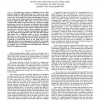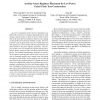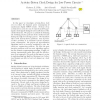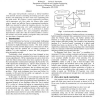10 search results - page 1 / 2 » Transition time bounded low-power clock tree construction |
ISCAS
2005
IEEE
14 years 2 months ago
2005
IEEE
— Recently power becomes a significant issue in clock network design for high-performance ICs because the clock network consumes a large portion of the total power in the whole s...
ISVLSI
2007
IEEE
14 years 3 months ago
2007
IEEE
As power consumption of the clock tree dominates over 40% of the total power in modern high performance VLSI designs, measures must be taken to keep it under control. One of the m...
ICCAD
1995
IEEE
14 years 27 days ago
1995
IEEE
In this paper we investigate activity-driven clock trees to reduce the dynamic power consumption of synchronous digital CMOS circuits. Sections of an activity-driven clock tree ca...
ASPDAC
2008
ACM
13 years 11 months ago
2008
ACM
Traditionally, clock network layout is performed after cell placement. Such methodology is facing a serious problem in nanometer IC designs where people tend to use huge clock buff...
ICCAD
2001
IEEE
14 years 6 months ago
2001
IEEE
This paper hierarchically constructs a hybrid mesh/tree clock network structure consisting of overlying zero-skew clock meshes, with underlying zero-skew clock trees originating f...




